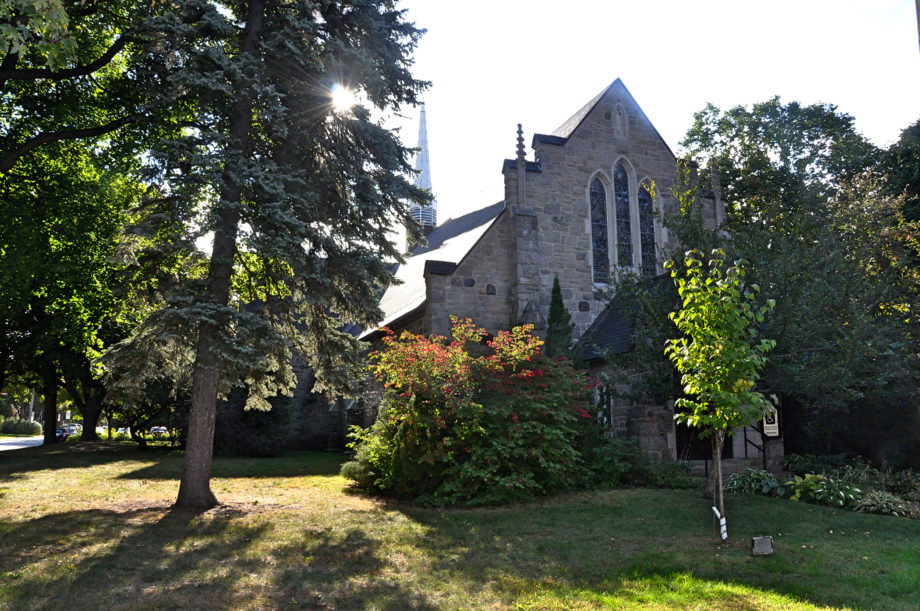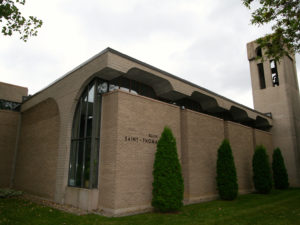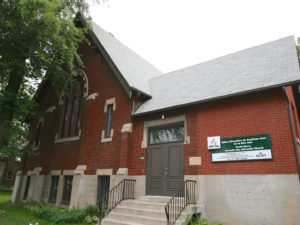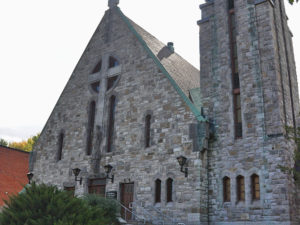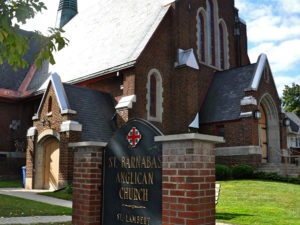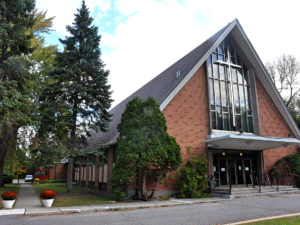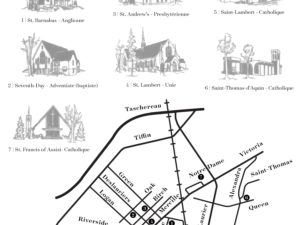Religious heritage
Architectural styles reflecting religious diversity
Saint-Lambert stands out for the wide range of architectural styles in its religious heritage, one of many reflections of its Anglophone and Francophone builders.
A religious heritage marked by both the Anglophone and Francophone communities
The presence of steeples of varying sizes and styles has long marked Saint-Lambert’s urban landscape. These steeples are landmarks associated with churches displaying different styles of architecture and associated with a variety of Christian religious practices.
Beginning with a Francophone and Catholic majority, the Saint-Lambert population underwent a major sociodemographic change in 1875, when the new passenger railway attracted white collar workers and businessmen who were mostly Anglophone.
These new arrivals were predominantly Protestant, including Methodists, Presbyterians, Anglicans, and occasionally Catholics.
The years following this sociodemographic shift were thus marked by the construction of churches responding to the growth in the Anglophone and Francophone communities. The remarkable diversity of places of worship in Saint-Lambert is closely linked to this development.
Inspired constructions by great architects and varied styles
Conceived by several well-known architects of the time, such as John Rawson Gardiner (1866-1956), to whom we owe the design of St. Barnabas Church (95 Lorne Street), and Guy Desbarats (1925-2003), who designed Saint-Thomas-d’Aquin Church (311 Saint-Thomas Street), or inspired by diverse architectural styles such as Bellotism (Église catholique de Saint-Lambert, 41 Lorne Street) or the Gothic revival (St. Barnabas Church), they form an unusual array of religious architecture within a relatively small land area.
Despite a number of changes, such as the fire at the first Catholic church and the disappearance of the Saint-Cuthbert Presbyterian and Weslyan Methodist churches, today Saint-Lambert still boasts a unique religious landscape worthy of our attention. This exceptional religious diversity reflects the richness and range of Catholic and Protestant faiths that co-exist in our city.
Bibliography
- Mouillepied Historical Society, under the direction of Chartrand Copti, Huguette, 2007. Saint-Lambert au fil des ans/Saint-Lambert through the Years. 1857-2007. Mouillepied Historical Society, Saint-Lambert.
- Corbeil, Thérèse, 2002. Saint-Lambert – Les églises. Cahier no. 9 – August 2002. Mouillepied Historical Society, Saint-Lambert.
- Inventaire des lieux de culte du Québec, 2016. Église Saint Barnabas. Église de Saint-Francis of Assisi. Église de Saint-Lambert. Église de Saint-Thomas-d’Aquin. Église Saint-Lambert United. Online.
- Répertoire du patrimoine culturel du Québec, 2016. Église Saint Barnabas. Église de Saint-Francis of Assisi. Église de Saint-Lambert. Église de Saint-Thomas-d’Aquin. Église Saint-Lambert United. Online.

